|
BULB LOG 44 --- 31st October 2007
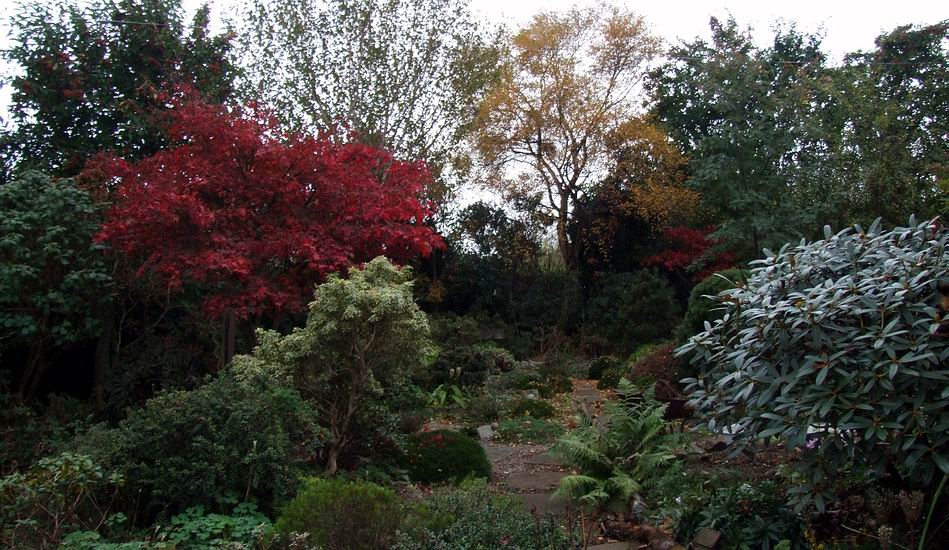
Autumn colours
Autumn colours are with us again and we also see the nights extending, meaning that daylight is getting shorter and shorter. Despite that, it is a good time as plants prepare themselves for the winter months in various ways: deciduous trees lose their leaves but not before giving us the most dramatic colours of the year. We have a lot of trees in our garden and I am sure we are all guilty of squeezing more into our plots than we should do but with trees and shrubs there comes a time when the gardener has to take action or be taken over by the growing forest.
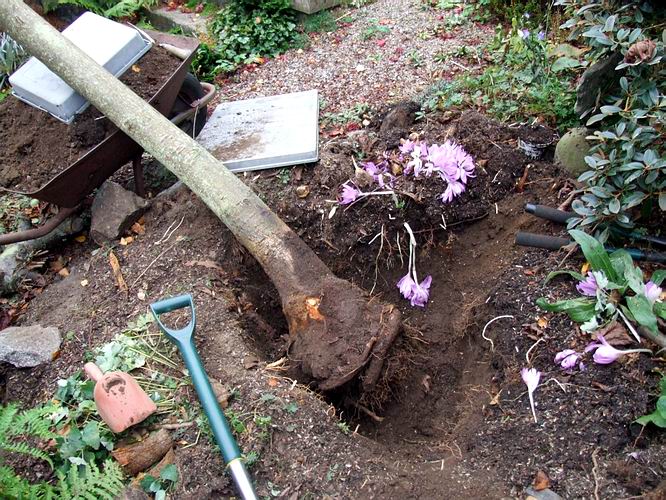
Removing tree stump
Regular readers of the bulb log will know that I have been removing three trees and here is the last stump coming out this week - believe me it is a lot bigger than it looks in this picture.
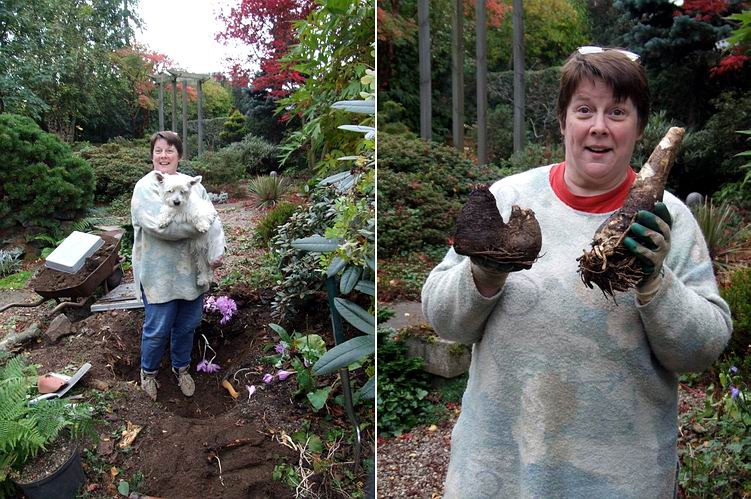
Plant a Lily
I had to remove the stump to create a big enough hole for the bulbs Maggi bought recently - to plant a lily! No, not Lily, our wee dog, but some huge Crinum and Eucomis bulbs she is holding. She told me she wanted to order a few South African bulbs to try but I had no idea I would need to remove a tree to get a big enough hole to plant them in. The good thing is that the tree hole is a good depth so the possibly tender bulbs are planted pretty deeply, helping to keep them away from normal frosts.
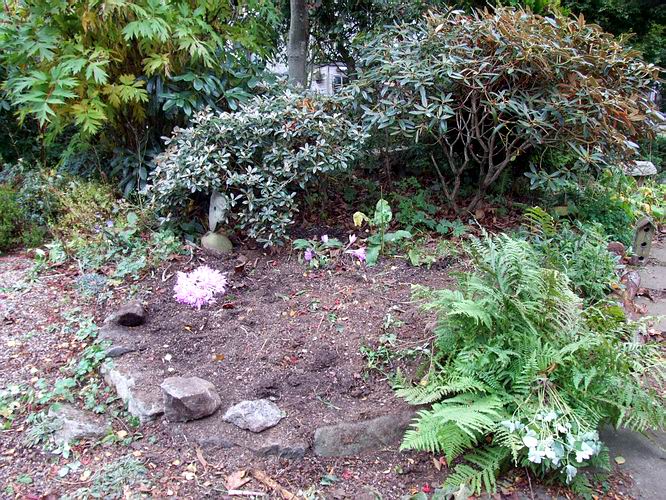
Site replanted
The entire area around the tree was surrounded by clumps of colchicums that all needed split so we took the opportunity to divide them and now this entire area is full of mixed colchicums, nerines and Maggi's new additions.
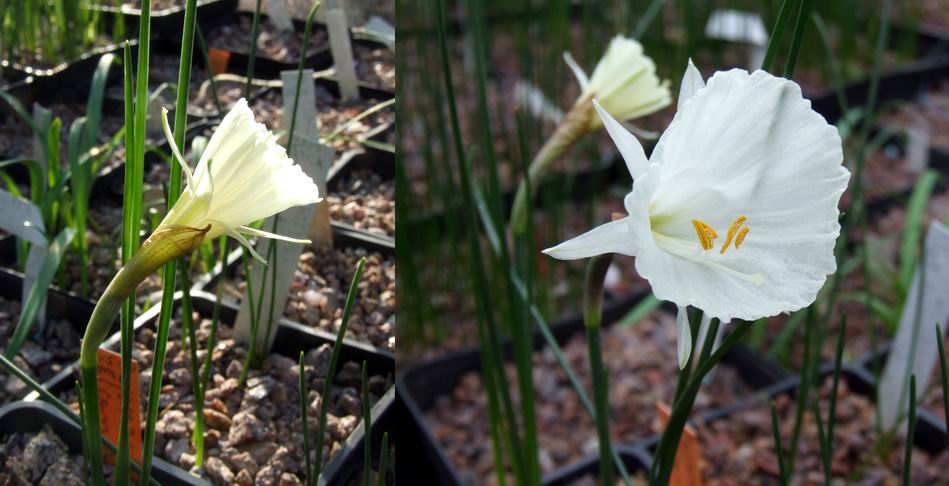
Narcissus 'Camoro' seedling
Just when many plants are going into their winter dormancy, many bulbs are starting into growth. The Narcissus 'Camoro' seedling that I have been following the progress of in the last few logs, opened in the sunshine last week before log 43 had reached your computer screen. This particular clone has been the first of this group of Narcissus to flower for a number of years and it is provides a very welcome extension of the winter flowering Narcissus season for us.
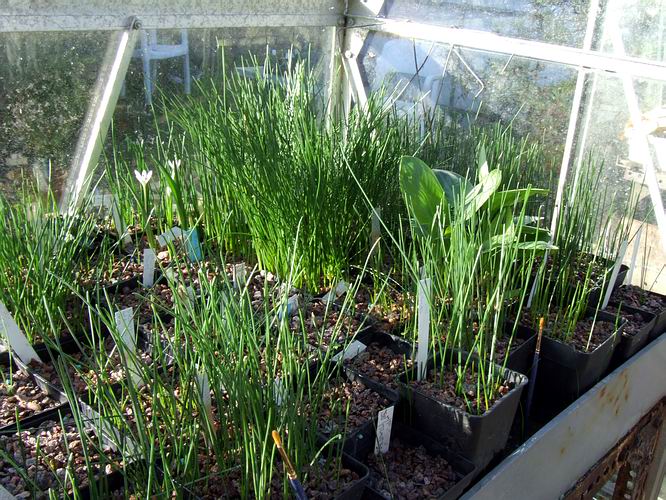
Narcissus leaves
Thinking back to last season when I was guilty of not watering some of the bulbs enough, now we are two months in from the first storm so I am reviewing the bulbs' progress. I have been thinking about when and why narcissus bulbs break down into many small bulbs. I believe it is due to the stress of being too dry - especially when they most need a constant supply of water to fuel the rapid growth of the leaves and flowers stems. With this group of winter flowering Narcissus the bulb forms its roots with the first storm and if the temperature remains on the mild side the main bud starts to grow producing the leaves and flowers stems - cold weather at this time would slow down the growth considerably.
As long as there is sufficient moisture available the main bud continues its growth, flowers and sets seed. If the conditions are good, second and sometimes third buds may grow leaves and these will, after a season or two, grow big enough for the bulb to split. However I conclude that if there is a lack of moisture in the first few months of growth the main bud looses its dominance and all the latent buds burst into action forming all the small bulbs that we find at re-potting time in place of a good sized flowering bulb. This is just like the process applied to many plants such as chrysanthemums, where if you pinch out the main bud you will encourage all the side shoots to grow and flower and you get bunch-flowering plants instead of single large blooms. So: it is critical to keep your bulbs well watered when they are in the period of rapid leaf growth.
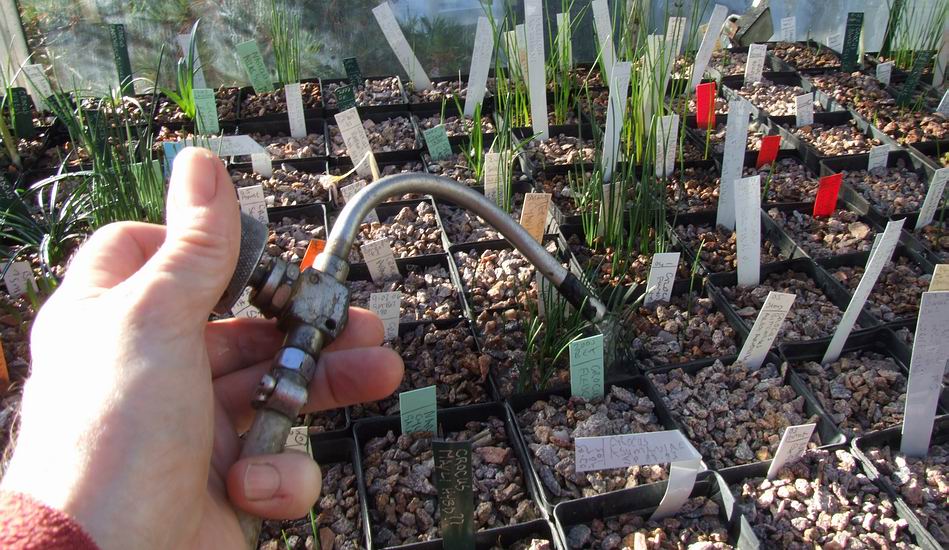
Water in proportion to leaves
With that in mind and the warm weather we are having I am watering almost every week directly into all the pots with leaves appearing. Pots showing no growth are not watered as they will remain moist by drawing water from the sand plunge. If your compost is well drained, as mine is, and the weather is warm to hot under glass then it is almost impossible to over water the bulbs with leaves. Last year was the first year that I converted completely over to growing the bulbs in plastic pots and I was aware that I may over water and cause problems with wet rot when in fact the problem that I created was the opposite. I kept the growing plants short of the thing they needed most when they are growing - water. I am determined not to repeat that failure.
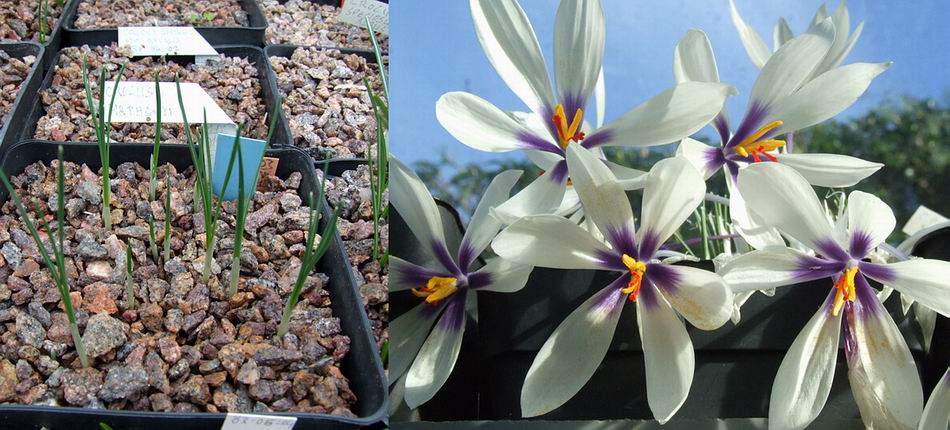
Crocus mathewii
To share another failure with you, on the left is one of my pots of Crocus mathewii with not a single flower. On the right are the beautiful flowers of Crocus mathewii and this is how this pot looked this time last year. The reason for this is not a shortage of water at this time, as I described above. This is entirely due to the hot April temperatures that forced the corms into an early dormancy just when they were forming their new corms so the growth was suspended half way through their cycle - the corms did not achieve their optimum size and so no flower buds formed. What can I do to tackle that next April if we get the same hot conditions?
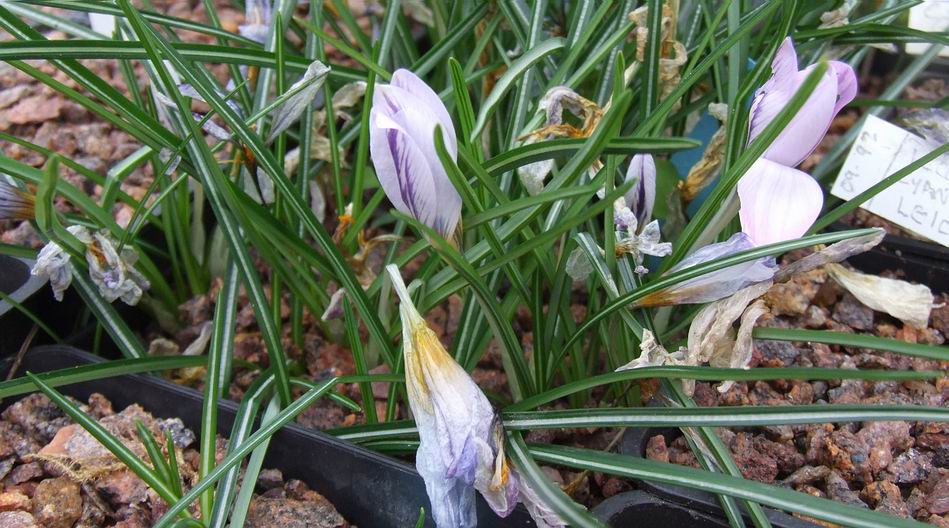
Remove dead flowers
One ongoing essential task is to remove the dead flowers from the crocuses. While it is not a serious problem in the recent bright dry weather, when the flowers just dry out and shrivel up, when the damp cold days return, as they will, these dry dead flowers quickly absorb moisture and that is followed by botrytis. Also notice the healthy leaf growth that the crocus have achieved aided by the regular waterings I have applied.
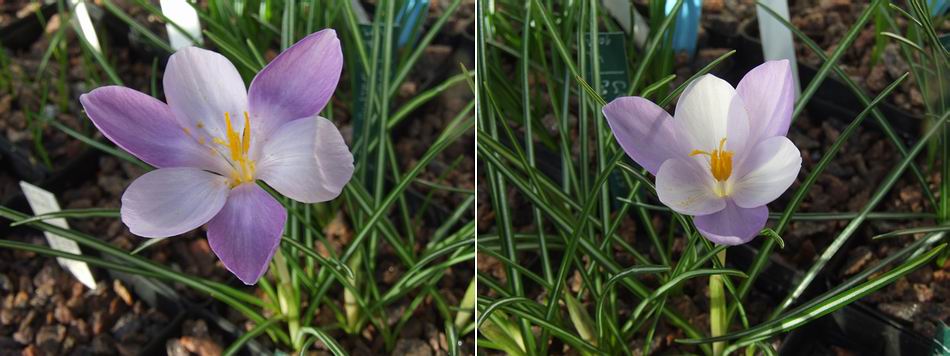
Crocus goulomyi
For many of the crocus, flowering is almost past now, but Crocus goulimyi is only just starting to bloom.
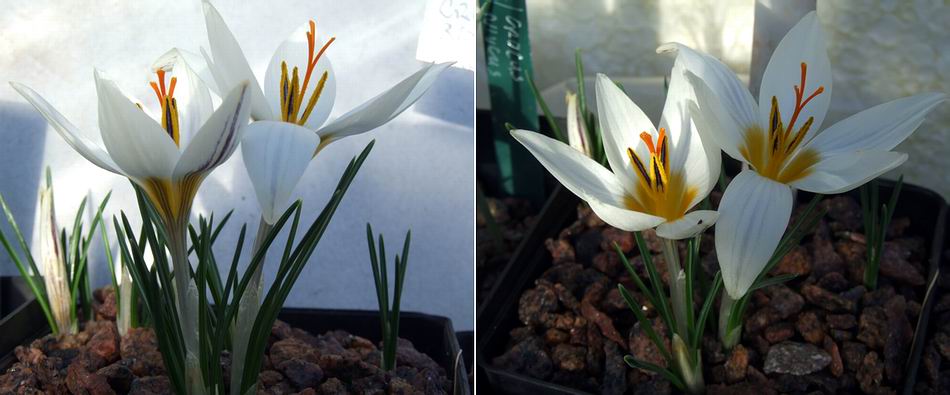
Crocus biflorus melantherus
Also Crocus biflorus melantherus is in flower. It is one of the biflorus group, which, unlike the majority of its species, flowers in the autumn. It is also noted for having black anthers but the pollen is still golden yellow - the anthers are only black before they dehisce. You can still see the black outside of the anthers surrounded by the golden pollen.
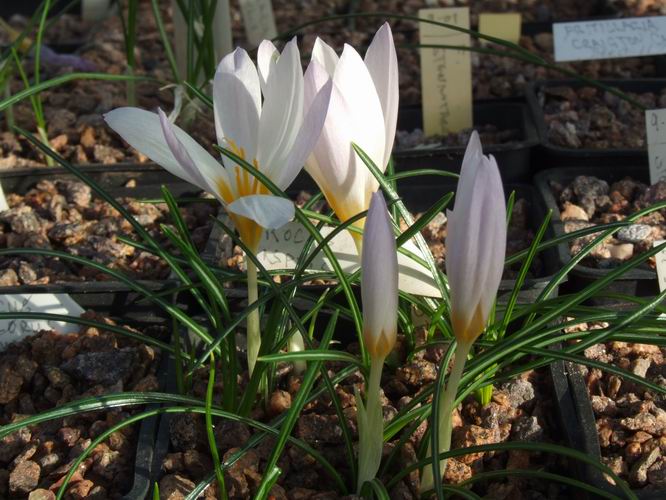
Crocus caspius
Crocus caspius is another species that is just coming into flower now.
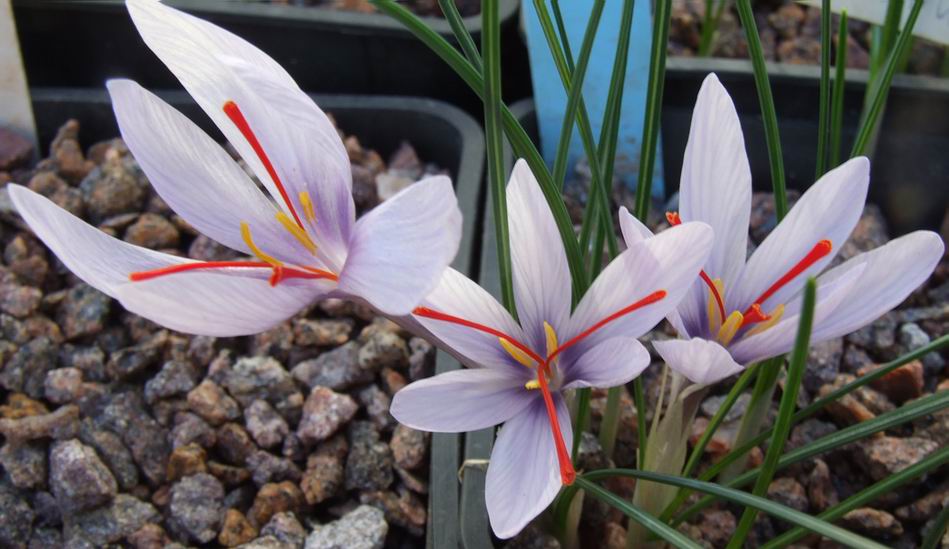
Crocus cartwrightianus
To end with here are few pictures of some crocus that I showed in recent logs - shown here just because they are beautiful and worth sharing with you. Firstly, Crocus cartwrightianus with its wonderful long style branches.
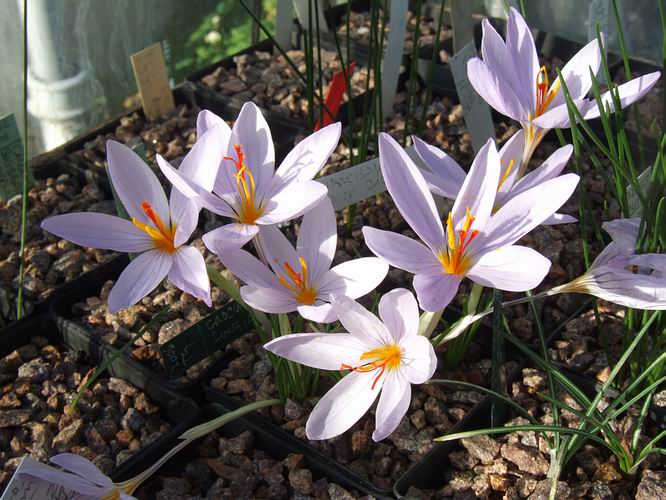
Crocus longiflorus
A second flush of flowers has appeared on this pot of Crocus longiflorus before the first flowers have faded away. Many crocus can produce a succession of flowers from a single corm.

Miss Lily
Finally, Miss Lily our wee West Highland white terrier….not planted!
^ back to the top ^
|

